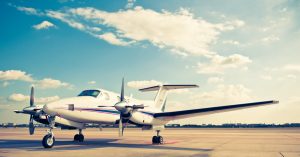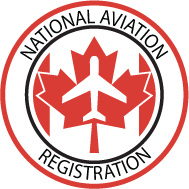When it comes to registering an aircraft in Canada, the requirements can seem confusing, especially for those new to aviation ownership. Transport Canada outlines very specific expectations for what must be submitted, how it should be presented, and who is eligible to submit it. Missing just one detail can delay the process. That’s where we come in. At National Aviation Registration, we’ve created a user-friendly digital portal that simplifies the Canadian aircraft initial registration process while ensuring accuracy and compliance with Transport Canada’s rules.

Who Needs to Complete Canadian Aircraft Initial Registration in Canada
Aircraft initial registration is required for all aircraft that are to be operated within Canada under Canadian jurisdiction. Whether the aircraft is privately owned, corporately held, or brought into Canada from another country, registration is necessary before any legal operation can take place.
This process is mandatory for:
- Aircraft that are newly purchased and never registered before.
- Aircraft imported from outside of Canada.
- Aircraft that were previously on a foreign register but are now transitioning into Canadian ownership.
If the aircraft is being built, restored, or is undergoing certification, initial registration will be one of the first milestones in establishing legal status in Canada’s aviation system.
Who Can and Cannot Register an Aircraft in Canada
Transport Canada limits who can register an aircraft. Registration is open to:
- Canadian citizens.
- Permanent residents.
- Corporations incorporated under Canadian laws that are majority Canadian-controlled.
These eligibility requirements are enforced strictly. If a foreign national or a company not incorporated in Canada attempts to register an aircraft without meeting one of these criteria, the application will be denied.
Some foreign entities may participate in leasing arrangements, but they cannot complete the initial registration unless the aircraft is being registered in a way that ensures compliance with Canadian Aviation Regulations. In special cases, a trustee or other designated party may act on behalf of the owner, but only when specific legal documentation is in place.
We help you determine eligibility before your application is submitted. Our portal guides users step-by-step so that you’re not left wondering whether you meet the legal standards required.
What Is Required for Aircraft Initial Registration
Applicants must gather and submit a complete and accurate set of documentation. Incomplete or inaccurate forms are among the most common causes of processing delays. Our service reviews your submission before it’s finalized, minimizing the risk of delay or rejection.
For aircraft initial registration in Canada, you’ll need to submit:
- A properly filled Application for Registration of Aircraft (Form 26-0522).
- Legal proof of ownership such as a bill of sale or purchase agreement.
- Confirmation of eligibility to register under Canadian regulations.
- Evidence of removal from any previous aircraft registry, if applicable.
- Fee payment for the registration.
These documents must be accurate, legible, and properly signed. If you submit a scanned or incomplete version of any required form, your application may be returned without processing. That’s why we’ve designed our portal to verify documentation as you go, helping you correct errors before they become problems.
How Aircraft Marking Affects Registration
Before the aircraft can be flown in Canada, it must be marked according to Canadian regulations. This means applying the correct registration marks visibly to the aircraft’s fuselage and tail in accordance with specific size, spacing, and location standards.
Canadian registration marks usually begin with “C-F” or “C-G” and are followed by three additional letters. Some owners prefer to request specific marks, while others allow Transport Canada to assign one.
We help users verify mark availability, walk through the steps to reserve them, and ensure the markings are applied correctly. This is one more step where simple errors—like the wrong font or size—can lead to unnecessary setbacks. Our system is designed to guide you around those problems before they start.
Ownership Proof and Legal Documentation
The aircraft must be owned outright by the person or entity applying for registration. Lease agreements, conditional sale contracts, or co-ownership documents must reflect the actual control and responsibility for the aircraft. In short, Transport Canada wants to see who legally owns the aircraft and who will be responsible for its operations.
We provide tools to upload and attach ownership documents securely through our online platform. Whether you have a traditional bill of sale, a purchase receipt, or more complex ownership papers, our interface supports you in presenting them correctly.
How We Simplify the Aircraft Registration Experience
We streamline the process by letting you submit everything online, right through our portal.
Our service benefits include:
- A simplified version of Transport Canada’s official forms.
- Clear instructions and helpful tips with each section.
- Built-in document upload and validation tools.
- Real-time progress updates and submission tracking.
- Early review to spot common errors before submission.
We are not a government agency, but we make dealing with one a whole lot easier. From start to finish, our service is designed to help you register your aircraft as efficiently and securely as possible.
Can Multiple Owners Register One Aircraft?
Yes, co-ownership is allowed as long as all owners meet the eligibility criteria. In such cases, all parties must be listed on the application, and supporting ownership documents must reflect the shared nature of the title.
For corporations, a Certificate of Incorporation and proof of Canadian control are also typically required. If ownership documents are in the name of a trust or an agent, Transport Canada may require even more detail to confirm control and eligibility.
We guide users through co-ownership documentation with prompts tailored to your application’s complexity. By reducing guesswork, we help ensure your joint registration is both legally compliant and processed promptly.
What Happens After Your Application is Approved
After successful aircraft initial registration, Transport Canada issues a Certificate of Registration. This document must always be on board the aircraft. It confirms the registered owner, the aircraft’s model and serial number, and its assigned registration marks.
While this certificate does not verify airworthiness, it is an essential part of being able to operate the aircraft within Canadian airspace. Aircraft must also undergo inspections and certification to verify that they meet Canadian airworthiness standards before taking flight.
We help ensure that your registration process doesn’t just end with a form submission. We provide a digital trail, downloadable confirmation, and assistance if follow-up documents or actions are required.
Get started with the initial registration of your Canadian aircraft
aircraft initial registration doesn’t have to be time-consuming or stressful. By offering a digital-first solution, we make this critical first step in aircraft ownership clear and accessible. Whether you’re registering a plane for personal use, company operations, or international import, our platform helps you meet every Transport Canada requirement without wasting time or missing a detail.
When you’re ready to begin the registration process, our online portal is available 24/7. We’ve designed it so that aircraft owners at every level—first-time buyers and experienced operators alike—can move forward with confidence.

